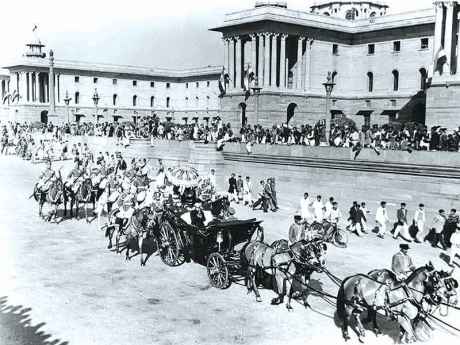 The first and foremost thing, which India is privileged with, is the concept of holiness. We have inherited a legacy of cultural and civilisational tradition, which adds spiritual values to even material things of larger importance. – Prof Rakesh Sinha
The first and foremost thing, which India is privileged with, is the concept of holiness. We have inherited a legacy of cultural and civilisational tradition, which adds spiritual values to even material things of larger importance. – Prof Rakesh Sinha
There has been oft-repeated controversies regarding respect for flags, national anthem, national songs and other symbols of national importance. Most of the controversies are unnecessary because those behind such incidents have no logic or justification for their negative approach to the national anthem or the national flag. A few years ago, a parliamentarian cited religion as a reason for not singing the national song, Vande Mataram, and more recently Amazon Canada used the tricolour for making doormats.
In Kerala, some radicals refused to sing the national anthem in cinema halls. A pertinent question arises: why Indians are sensitive to national symbols? And why we do not treat them liberally as some of the advanced democracies do? To understand this problem one has to re-examine the growth of our national sentiments.
The first and foremost thing, which India is privileged with, is the concept of holiness. We have inherited a legacy of cultural and civilisational tradition, which adds spiritual values to even material things of larger importance. Our civilisation has never been materialistic; material fortunes have always been superseded by intellectual and spiritual prosperity. Therefore, unlike other countries, Indian nationalism distinctly gives a sense of spiritualism too and we celebrate our territorial boundary not merely as a piece of land or a sign of mere sovereignty, but as a spiritual entity (which should not be confused with religious entity). We consider India as our motherland, Bharat Mata. This  trait is present in each and every Indian, and even in those who oppose it due to political reasons or ideological indoctrination. But a close scrutiny of the behavioural pattern shows that Indians too have cultural nationalism.
trait is present in each and every Indian, and even in those who oppose it due to political reasons or ideological indoctrination. But a close scrutiny of the behavioural pattern shows that Indians too have cultural nationalism.
This is one of the reason we consider our symbols of sovereignty and freedom holy and do not treat them as material things. This argument may be unpalatable to many who see life from the materialistic prism and the nation form the Western materialistic indoctrination. There is another rationale behind our ultimate respect for these symbols. The tricolour, Vande Matram and the national anthem have not been in the aftermath of intellectual discussion or political decisions. They have evolved along the process of development of modern nationalism, along with anti-imperialist struggles. The best political and intellectual minds contributed to their adoption and they inspired millions to sacrifice their lives for the motherland. Seven teenagers in Patna sacrificed their lives for the honour of the national flag on August 11, 1942. Four of them — Umakant Prasad Sinha, Ramanand Singh, Devipada Choudhry and Ramgovind Singh — were Class 9 students.
Similarly, Vande Mataram was a war cry during the freedom movement. RSS founder K. B. Hedgewar was thrown out from the school in Nagpur for shouting Vande Mataram. The imperialist government issued a circular known as Risley Circular against shouting Vande Mataram. The context of their evolution made them inalienable ingredients of our nationalist tradition.
There is sentiment of millions attached with them, they symbolised our brave struggle against imperialism and sacrifices of our martyrs and also inspire us to protect our freedom. They are not the things of the past, but present and future possession of our posterity. A few radicals can’t defy millions under the pretext of freedom of expression. – Deccan Chronicle, 19 January 2017
» Prof Rakesh Sinha is an associate professor of the University of Delhi and honorary director of India Policy Foundation.
Source: https://bharatabharati.wordpress.com/2017/01/25/our-cultural-legacy-rakesh-sinha/







